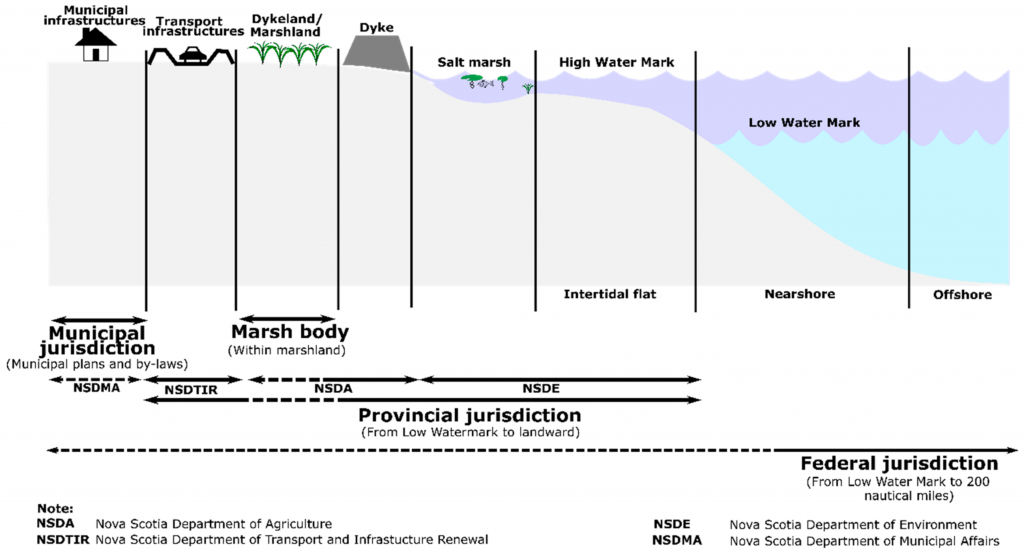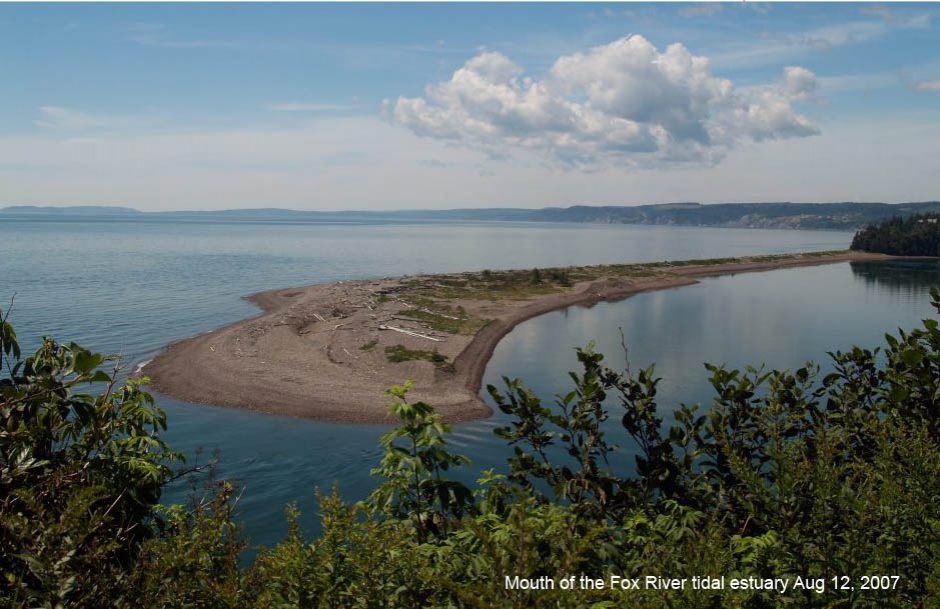Institutional Innovation for Nature-Based Coastal Adaptation: Lessons from Salt Marsh Restoration in Nova Scotia, Canada
H. M. Tuihedur Rahman et al., 2019. Sustainability 2019, 11, 6735; doi:10.3390/su11236735. “Abstract: Sea-levels have been rising at a faster rate than expected. Because of the maladaptive outcomes of engineering-based hard coastal protection infrastructure, policy makers are looking for alternative adaptation approaches to buffer against coastal flooding—commonly known as nature-based coastal adaptation (NbCA)…. This study, therefore, helps us to understand how to implement a relatively new adaptation option by building trust-based networks among diverse and relevant institutional actors.” The paper describes existing and historical administrative structures and proposes new structures to facilitate NbCA approaches to adapting to sea-level rise.

Coastal jurisdictions of Nova Scotia (Note: the solid double-headed arrows indicate direct control on decision making and dotted double-headed arrows indicate no direct control on decision making). (The Journal is Open Access and “No special permission is required to reuse all or part of article published by MDPI, including figures and tables”)
Risk Proofing Nova Scotia Agriculture: NOVA SCOTIA DYKE VULNERABILITY ASSESSMENT
Danika van Proosdij et al., 2018. Report to Nova Scotia Federation of Agriculture
Breaching tradition: Salt marshes replacing Nova Scotia’s dikes
Moira Donovan for CBC Posted: Feb 09, 2020 “…A hundred kilometres away, on a different part of the Bay of Fundy, the conversation about holding the line is taking a different turn. Since 1870, Advocate Harbour has been protected by a dike originally built by Acadian settlers. But that dike, and the natural sea wall located just beyond it, are under increasing threat due to climate change.”
Climate crossroads
On newsinteractives.cbc.ca by Emma Smith, Phlis McGregor and Maeve McFadden, April 22, 2021 (Earth Day). About protecting dyke lands on the Chignecto Isthmus. “Residents, local leaders and experts all say it’s only a matter of time before the dikes fail, and it’s why researchers are now looking at ways to protect the coast by using a technique that’s even older than the dikes: the marshlands themselves. “I think it’s absolutely urgent that we act on this now,” said Danika van Proosdij, a professor at Saint Mary’s University who is helping to lead natural restoration projects in the Chignecto area. The method involves breaching the dikes, and moving them further back, so that saltwater can once again flood the marsh. Once the tidal flow returns, plants spring up in front of the dike and become a natural buffer to the waves. It will now be up to governments in New Brunswick and Nova Scotia “to make some tough choices about where to hold the line and where to allow it to move back,” van Proosdij said.”
